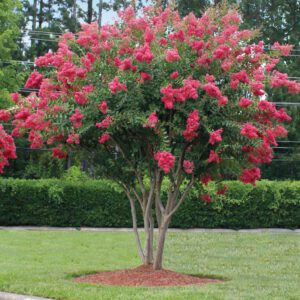By BRANTLEY SNIPES

Last month’s freeze took a major toll on lawns and landscapes across the region. However, there is still hope! With our evergreens, most damage seems to be contained to the leaves, but we won’t know for sure for a few more weeks in some cases. They will probably defoliate and flush back out this spring, so as bad as they may look, don’t prune or cut these shrubs back! Let them regenerate on their own, as most of them will. I’ve worked up some simple do’s and don’ts to address this and a few other questions as we get our yards ready for spring. And remember to have patience—the resiliency of plants is a wonder!


DON’T murder your crape myrtle. Crape myrtles are trees, not shrubs. Do not cut these trees back to the trunks. Instead, remove all limbs and stems smaller than your thumb, and any overlapping branches within the canopy. Remember that the purpose of pruning is to allow water and light to access the interior of a plant’s existing canopy.


DO cut back broad-leaf evergreens, such as aspidistra and holly fern. Broadleaf evergreens that have brown spots or brown leaves will not grow back green. Remove these leaves from the plant and allow for new growth.


DON’T prune your evergreen shrubs yet. Wait for your winter-damaged shrubs to put back out before pruning or cutting them back. Once they are flush with new growth, you can remove the dead limbs, which will be clearly visible.


MORE TIPS:
DO make sure that old leaves and mulch are not built up and compounded at the base of a plant. Rake back ornamental matter from the base of the plant to allow for better air flow. Add some slow-release fertilizer to create optimal growing conditions for damaged shrubs.
DO cut your liriope and ornamental grasses back.
DO prune your boxwoods if they have not defoliated. Remove the top third of the plant canopy to allow light to access the interior of the plant. It will not be pretty at first.



